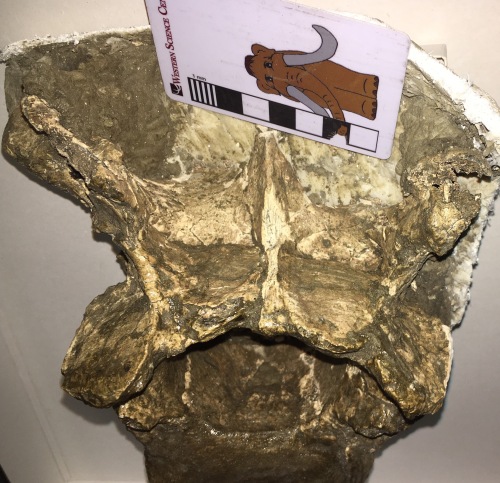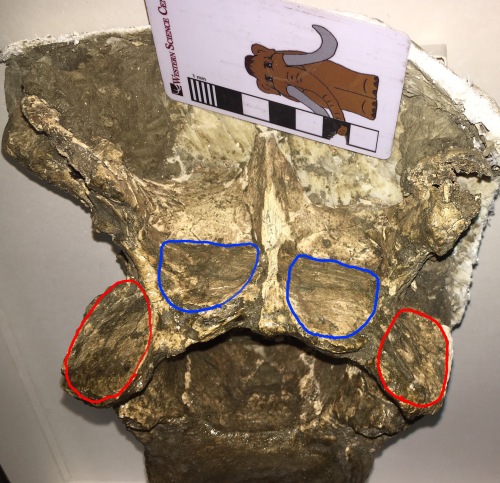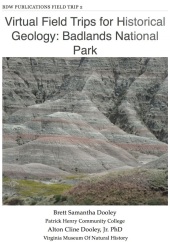Earlier this week, sloth expert Greg McDonald spent several days at the Western Science Center looking at ground sloth material in our collection. I spent that time peering over his shoulder and asking lots of questions. This made the work go more slowly, but it also greatly improved my understanding of ground sloths.
At the top is an anterior view of a vertebra from Paramylodon harlani, the most common ground sloth from Diamond Valley Lake. Even though this is a damaged bone, it still shows some important features for understanding sloths.
Sloths, along with anteaters and armadillos, are members of the Order Xenarthra, a group that is native to South America. While these animals may seem pretty disparate in their body plans, there are characters that they all share that reveal their relationship to one another. One of the most significant features is reflected in the name of the group; Xenarthra roughly means “alien joint”.
Most tetrapods have vertebrae that articulate with the vertebrae both ahead of and behind them in the column. Besides the main body of the vertebra (the centrum), there are usually a pair of articulation at the top of the neural canal called the zygapophyses. At the top front edge of the neural arch are the left and right prezygapophyses. The articular surfaces of the prezygapophyses face more-or-less dorsally, and articulate with the postzygapophyses, which are at the top back edge of the neural canal and face ventrally. Below is the dorsal view of a mastodon vertebra featured on Fossil Friday last April, with the prezygapophyses outlined in red (they would normally be symmetrical, but this specimen had been injured):
Below is an oblique view of the Paramylodon vertebra, looking down from in front (the centrum is partially visible at the bottom of the image):

Here is the same image, with the prezygapophyses outlined in blue:

Notice the two articulations outlined in red? Those are the xenarthrous processes (the “alien joints”), which articulate with corresponding points on the posterior edge of the neural canal of the preceding vertebra. The xenarthrous processes are the key feature linking together the various members of the Xenarthra, and are not found in any other group of mammals.
Thanks again to Greg McDonald for visiting WSC and giving us so much help with our sloth material.




